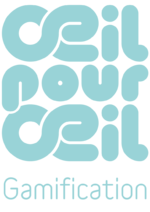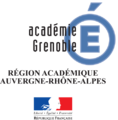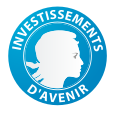Différences entre versions de « LUCIOLE:Accueil »
De GBLL, TAL, ALAO, etc.
(Page redirigée vers LUCIOLE:Accueil) |
|||
| Ligne 1 : | Ligne 1 : | ||
| − | # | + | {|style="background-color:#70b7ff;color:white;margin-bottom:1em" |
| + | |- | ||
| + | |[[Fichier:LUCIOLE-logo.svg|90px]] | ||
| + | |style="vertical-align:top"|The '''[[#Le_projet_FLUENCE|FLUENCE]]''' [http://www.caissedesdepots.fr/espaces-de-formation-de-recherche-et-danimation-numeriques-e-fran e-FRAN] project proposes applications developped by 3 labs of the Univ. Grenoble Alpes: [http://lpnc.univ-grenoble-alpes.fr/Fluence?lang=fr LPNC], [http://www.gipsa-lab.grenoble-inp.fr/en/research/research-projects.php?id_projet=244 GIPSA-lab] and [http://lidilem.u-grenoble3.fr/axes/axe-3/projets-de-recherche-axe-3/article/fluence-luciole LIDILEM].<br />This page is dedicated to one of them: '''LUCIOLE''' (LUdique au service de la CompréhensIon Orale en Langue Étrangère). | ||
| + | |} | ||
| + | {{translate page}} | ||
| + | == The FLUENCE project == | ||
| + | The [[LUCIOLE:Accueil|LUCIOLE]] project is a subpart of the FLUENCE project. | ||
| + | ===Informations Générales === | ||
| + | {| | ||
| + | |- | ||
| + | |[[Fichier:Logo-Fluence.png|200px|link=http://fluence.cnrs.fr]] | ||
| + | | | ||
| + | * '''Scientific coordinator''': Sylviane Valdois (CNRS/LPNC) ; | ||
| + | * '''Duration''': 2017-2020 ; | ||
| + | * '''[[#Soutiens_institutionnels_du_projet_FLUENCE|Financing]]''': [http://www.caissedesdepots.fr/espaces-de-formation-de-recherche-et-danimation-numeriques-e-fran e-FRAN] ; | ||
| + | * '''Official website''': http://fluence.cnrs.fr | ||
| + | * (Private access) '''repository''': https://gricad-gitlab.univ-grenoble-alpes.fr/lzbk/LUCIOLE | ||
| + | |} | ||
| + | |||
| + | === Presentation === | ||
| + | ==== Objectives ==== | ||
| + | FLUENCE aims at developping and validating digital applications used in class so as to adapt to the needs of each children to optimize their learning. Based on research data, it aims at developping fluid and easy reading through specific training targeting underlying cognitive processes (visual/visuo-attentionnal processes) and holistic processes inherent to text reading (orthographical units, prosody, tone groups). Reading speed acts as a catalyst of text comprehension and orthographic learning, the general objectiv is to improve significatively the pupils academic success. | ||
| + | ==== Stakes ==== | ||
| + | One of the core hypotheses of the project is that action games modalities can favor the targeted cognitive processes. | ||
| + | |||
| + | In its longitudinal cycle 2 (6-8 yrs-old) aspect is integrated in a learning difficulty prevention perspective. The 2{{up|nd}} aspect of the project, targetting 6{{exp|ème}} poor readers (10-11 yrs-old) aims at reducing performance gaps in ''middle school''. | ||
| + | |||
| + | One of the issues is also to provide teachers with an interface allowing them to follow in real time the pupils' progress to provide personnalized pedagogical responses. | ||
| + | |||
| + | In targetting reading fluency and its automation through the use of dedicated digital artefacts, the projects follows the recommandation of the [http://www.cnesco.fr/wp-content/uploads/2016/09/Synthese-rapport_Bianco.pdf CNESCO 2016] ''consensus conference'': « Lire, comprendre, apprendre : comment soutenir le développement des compétences en lecture ». | ||
| + | === The part played by LUCIOLE === | ||
| + | LUCIOLE aims at proposing a purposeful task for the placebo group, it thus needs to: | ||
| + | * neither allow the students to work on their reading skills; | ||
| + | * nor resorting to [[jeu d'action|action games]] modalities. | ||
| + | |||
| + | == LUCIOLE's objectives == | ||
| + | Through the definition of the experiment plan, <u>the other applications of the FLUENCE project act as a placebo for the LUCIOLE project</u>. Due to the project's onstraint, we can work on diverse set of problems and envision long term research. | ||
| + | |||
| + | First, in learning a foreign language, it seemed that oral comprehension was (at least in 2012) the competence most lacking for French learners<ref>[http://ec.europa.eu/languages/eslc/docs/en/final-report-escl_en.pdf European Commission (2012). First European Survey on Language Competences. Final Report, April 2012] ([https://www.zotero.org/groups/242384/items/itemKey/KSFUZEI2 lien interne])</ref>. The constraint of not resorting to reading is thus an opportunity with that regard. | ||
| + | |||
| + | The defined game modalities can rely on/illustrate results from ''usage based grammars'' work, which, without denying the usefulness of output or other difficulties state: | ||
| + | ''[…] Usage-Based Theory would predict that with sufficient input and practice, any morphosyntactic pattern can be acquired […]'' [[Bybee (2008) — Usage-based grammar and second language acquisition|(Bybee, 2008:232)]]<ref>Bybee, J. Usage-based grammar and second language acquisition<br /> | ||
| + | In Robinson, P. & Ellis, N. C. (Eds.) ''Handbook of Cognitive Linguistics and Second Language Acquisition'', Routledge, 2008, 216-226</ref> | ||
| + | |||
| + | Beyond more strictly linguistic competences, one of the aims of LUCIOLE is to prepare the child to evolve in an ''allophone'' environment in which they won't understand all utterances and favor comprehension strategies. | ||
| + | |||
| + | Finally, the ''game'' aspect of LUCIOLE, founded on narrative (among other mechanisms), will allow to tackle the notion of ''playful attitude''<ref>Silva, H. Le jeu en classe de langue CLE International, 2008</ref> | ||
| + | <ref>Brougère, G. Le jeu peut-il être sérieux? Revisiter Jouer/Apprendre en temps de serious game ''Australian Journal of French Studies'', 2012, 49, 117–129</ref> and its learning output. | ||
| + | |||
| + | == Synopsis == | ||
| + | {{encart|Dans LUCIOLE, le joueur incarne Sasha, un Français d’environ 8-10 ans qui se fait recruter par un agent secret anglais (Ash). Au cours de plusieurs missions Sasha, accompagné de son mentor Ash et de l’entraîneur des espions (Hartguy), arrêtera des méchants qui ont enlevé des animaux de compagnie. Ils doivent partir en Angleterre et s’infiltrer parmi des méchants (anglophones) pour obtenir des informations importantes et libérer les animaux. C’est ainsi que Sasha devra acquérir et développer ses compétences en compréhension orale de l’anglais.<ref>[[:Fichier:775-mémoire M1 DILIPEM-Adrea Soh.pdf|Mémoire d'Adrea Soh]]</ref>}} | ||
| + | == [[LUCIOLE:Crédits|Liste des contributeurs]] == | ||
| + | === Conception, contenus, coordination === | ||
| + | {| | ||
| + | |- | ||
| + | |[[Fichier:Logo-Uga.svg|150px]] | ||
| + | | | ||
| + | * Anne Blavot — Chef de projet / UGA ; | ||
| + | * Marie-Pierre Jouannaud — Professeur Agrégé en Anglais / UGA ; | ||
| + | * Mathieu Loiseau — Maitre de Conférences en Informatique / LIDILEM, UGA ; | ||
| + | * Coralie Payre-Ficout — Maitre de Conférences en Anglais / LIDILEM, UGA ; | ||
| + | * Adrea Soh — Stagiaire M1 Didactique des Langues parcours DILIPEM (et M2 aussi) ; | ||
| + | * Lucie Le Roux — Stagiaire M1 Langues, Littérature, Civilisations Étrangères et Régionales ; | ||
| + | * Thomas Trial — Stagiaire M1 Langues, Littérature, Civilisations Étrangères et Régionales ; | ||
| + | * Róisín Lee — Stagiaire M1 Langues, Littérature, Civilisations Étrangères et Régionales ; | ||
| + | * Fatima Benmaïssa — Stagiaire M1 Didactique des Langues parcours DILIPEM ; | ||
| + | * Johana Ladino — Stagiaire M1 Didactique des Langues parcours DILIPEM ; | ||
| + | * Sharmili Zafari — Stagiaire M1 Didactique des Langues parcours DILIPEM ; | ||
| + | * Fatma Miladi — Stagiaire recherche. | ||
| + | |} | ||
| + | |||
| + | === Implémentation et graphismes === | ||
| + | La réalisation du prototype iOS a été confiée à l'entreprise [http://www.oeilpouroeil.fr/ Œil pour œil] : | ||
| + | {| | ||
| + | |- | ||
| + | |[[Fichier:Logo opo rvb-01.png|link=http://www.oeilpouroeil.fr/|150px]] | ||
| + | | | ||
| + | *Philippe HAUDEGOND : Boss | ||
| + | *Jean BARNEZET : Directeur Associé | ||
| + | *Pierre CHOISNET : Directeur de Création | ||
| + | *Sandrine VILLEZ : Conceptrice Rédactrice | ||
| + | *Emelyne WATRELOT : Assistante Projet | ||
| + | *Julien BABIGEON : UX Designer | ||
| + | *Julien CRAYE : Graphic Designer | ||
| + | *Benjamin BISARO : Graphic Designer | ||
| + | *Valentin TEIRLINCK : Game Designer | ||
| + | *Rémy FRANÇOIS : Développeur Unity/3D | ||
| + | *François PRÉVOST : Comptable | ||
| + | |} | ||
| + | |||
| + | === Les voix === | ||
| + | Conformément à ses objectifs le jeu regroupe de nombreux enregistrements, et n'aurait pas été possible sans les contributions de nos acteurs : | ||
| + | *Jessica Small ; | ||
| + | *Chris Mitchell ; | ||
| + | *Hugo Almoric ; | ||
| + | *Caroline Schlenker ; | ||
| + | *Marieke De Koning ; | ||
| + | *Thomas Trial ; | ||
| + | *Adam Carter ; | ||
| + | * Róisín Lee ; | ||
| + | *Danielle Wagner. | ||
| + | |||
| + | === Librairies ''open source'' utilisées dans le système === | ||
| + | * ZXing.Net : https://github.com/micjahn/ZXing.Net ([[wfr:licence Apache|licence Apache]]) ; | ||
| + | * Json.NET : https://www.newtonsoft.com/json ([[wfr:licence MIT|licence MIT]]). | ||
| + | |||
| + | == Soutiens institutionnels du projet [[#Le_projet_FLUENCE|FLUENCE]] == | ||
| + | === Acteurs === | ||
| + | <gallery> | ||
| + | Fichier:Logo-Uga.svg|link=http://www.univ-grenoble-alpes.fr | ||
| + | Fichier:Logo lidilem-sans font.svg|link=http://lidilem.u-grenoble3.fr/axes/axe-3/projets-de-recherche-axe-3/article/fluence-luciole | ||
| + | </gallery> | ||
| + | |||
| + | === Partenaires === | ||
| + | <gallery> | ||
| + | File:cnrs-filaire.svg | ||
| + | Fichier:Logo-Academie Grenoble - 2016-simplifié.png | ||
| + | </gallery> | ||
| + | |||
| + | === Financement === | ||
| + | <div style="width:650px;"><gallery> | ||
| + | Fichier:Logo-E-fran.jpg | ||
| + | Fichier:Logo-Investissements d'avenir.svg|link=http://www.gouvernement.fr/le-commissariat-general-a-l-investissement | ||
| + | Fichier:Logo-CDC dégueu.jpg|link=http://www.caissedesdepots.fr/investissements-davenir-22-projets-laureats-de-laction-e-fran-pour-le-developpement-de-territoires-0 | ||
| + | </gallery><span>''Opération soutenue par l’État dans le cadre du volet e-FRAN du Programme d’investissement d’avenir, opéré par la Caisse des Dépôts''</span> | ||
| + | </div> | ||
| + | |||
| + | == Notes et références == | ||
| + | <references /> | ||
Version du 11 juin 2018 à 12:44

|
The FLUENCE e-FRAN project proposes applications developped by 3 labs of the Univ. Grenoble Alpes: LPNC, GIPSA-lab and LIDILEM. This page is dedicated to one of them: LUCIOLE (LUdique au service de la CompréhensIon Orale en Langue Étrangère). |
The FLUENCE project
The LUCIOLE project is a subpart of the FLUENCE project.
Informations Générales

|
|
Presentation
Objectives
FLUENCE aims at developping and validating digital applications used in class so as to adapt to the needs of each children to optimize their learning. Based on research data, it aims at developping fluid and easy reading through specific training targeting underlying cognitive processes (visual/visuo-attentionnal processes) and holistic processes inherent to text reading (orthographical units, prosody, tone groups). Reading speed acts as a catalyst of text comprehension and orthographic learning, the general objectiv is to improve significatively the pupils academic success.
Stakes
One of the core hypotheses of the project is that action games modalities can favor the targeted cognitive processes.
In its longitudinal cycle 2 (6-8 yrs-old) aspect is integrated in a learning difficulty prevention perspective. The 2Modèle:Up aspect of the project, targetting 6ème poor readers (10-11 yrs-old) aims at reducing performance gaps in middle school.
One of the issues is also to provide teachers with an interface allowing them to follow in real time the pupils' progress to provide personnalized pedagogical responses.
In targetting reading fluency and its automation through the use of dedicated digital artefacts, the projects follows the recommandation of the CNESCO 2016 consensus conference: « Lire, comprendre, apprendre : comment soutenir le développement des compétences en lecture ».
The part played by LUCIOLE
LUCIOLE aims at proposing a purposeful task for the placebo group, it thus needs to:
- neither allow the students to work on their reading skills;
- nor resorting to action games modalities.
LUCIOLE's objectives
Through the definition of the experiment plan, the other applications of the FLUENCE project act as a placebo for the LUCIOLE project. Due to the project's onstraint, we can work on diverse set of problems and envision long term research.
First, in learning a foreign language, it seemed that oral comprehension was (at least in 2012) the competence most lacking for French learners[1]. The constraint of not resorting to reading is thus an opportunity with that regard.
The defined game modalities can rely on/illustrate results from usage based grammars work, which, without denying the usefulness of output or other difficulties state:
[…] Usage-Based Theory would predict that with sufficient input and practice, any morphosyntactic pattern can be acquired […] (Bybee, 2008:232)[2]
Beyond more strictly linguistic competences, one of the aims of LUCIOLE is to prepare the child to evolve in an allophone environment in which they won't understand all utterances and favor comprehension strategies.
Finally, the game aspect of LUCIOLE, founded on narrative (among other mechanisms), will allow to tackle the notion of playful attitude[3] [4] and its learning output.
Synopsis
Dans LUCIOLE, le joueur incarne Sasha, un Français d’environ 8-10 ans qui se fait recruter par un agent secret anglais (Ash). Au cours de plusieurs missions Sasha, accompagné de son mentor Ash et de l’entraîneur des espions (Hartguy), arrêtera des méchants qui ont enlevé des animaux de compagnie. Ils doivent partir en Angleterre et s’infiltrer parmi des méchants (anglophones) pour obtenir des informations importantes et libérer les animaux. C’est ainsi que Sasha devra acquérir et développer ses compétences en compréhension orale de l’anglais.[5]
Liste des contributeurs
Conception, contenus, coordination
Implémentation et graphismes
La réalisation du prototype iOS a été confiée à l'entreprise Œil pour œil :
Les voix
Conformément à ses objectifs le jeu regroupe de nombreux enregistrements, et n'aurait pas été possible sans les contributions de nos acteurs :
- Jessica Small ;
- Chris Mitchell ;
- Hugo Almoric ;
- Caroline Schlenker ;
- Marieke De Koning ;
- Thomas Trial ;
- Adam Carter ;
- Róisín Lee ;
- Danielle Wagner.
Librairies open source utilisées dans le système
- ZXing.Net : https://github.com/micjahn/ZXing.Net (licence Apache) ;
- Json.NET : https://www.newtonsoft.com/json (licence MIT).
Soutiens institutionnels du projet FLUENCE
Acteurs
- Logo lidilem-sans font.svg
Partenaires
Financement
Notes et références
- ↑ European Commission (2012). First European Survey on Language Competences. Final Report, April 2012 (lien interne)
- ↑ Bybee, J. Usage-based grammar and second language acquisition
In Robinson, P. & Ellis, N. C. (Eds.) Handbook of Cognitive Linguistics and Second Language Acquisition, Routledge, 2008, 216-226 - ↑ Silva, H. Le jeu en classe de langue CLE International, 2008
- ↑ Brougère, G. Le jeu peut-il être sérieux? Revisiter Jouer/Apprendre en temps de serious game Australian Journal of French Studies, 2012, 49, 117–129
- ↑ Mémoire d'Adrea Soh






